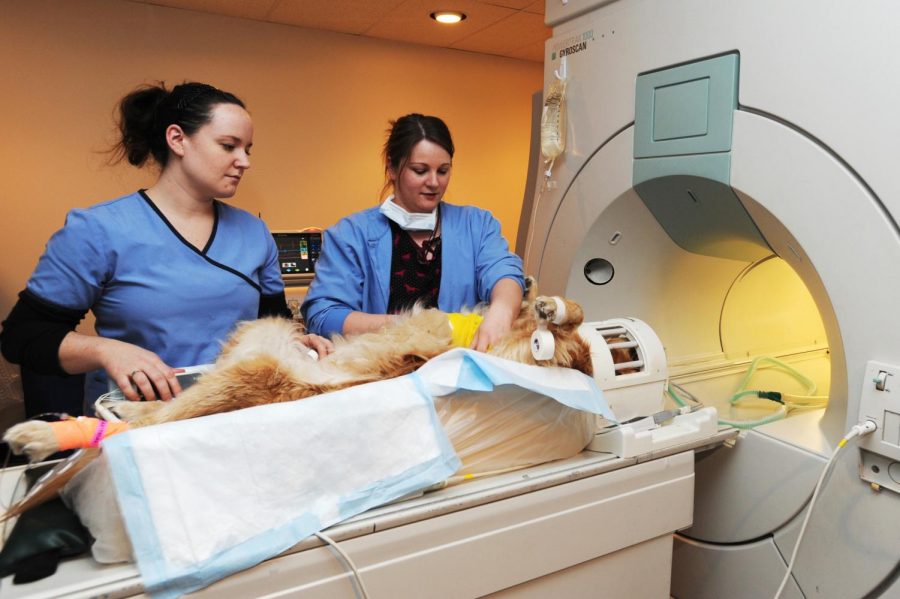Veterinary college replaces long-lasting MRI machine
School will remove device in 12, 14 weeks; cases have increased
Animal owners would come in from as far as Wyoming to use WSU’s MRI machine. But now, Kay Glaser of the veterinary medicine office says they need a new one.
March 21, 2019
The WSU College of Veterinary Medicine has replaced its 22-year-old MRI machine after three and a half years of fundraising.
It is recommended to replace the machine every three to five years, but Kay Glaser, associate development director of the veterinary medicine office, said the college’s MRI machine lasted so long with the use of replacement parts from bone yards.
The machine captured good pictures of the animals, but it continued to break down, Glaser said.
“We had to scavenge parts from another machine,” she said. “It became slower and slower to start up again because [the mechanics] had to find parts.”
The machine scans small and large animals with radio waves in order to diagnose conditions, like tumors or torn muscles. Glaser said the teaching hospital primarily uses an MRI for neuro-cases.
Veterinarians at the hospital have seen a variety of different species, such as dogs, cats, horses, eagles, grizzly bears, ferrets and camels, she said.
“Our caseload has been increasing, so has our workload,” she said.
The replacement cost approximately $1.4 million and the cost to prepare the room was over $900,000, Glaser said.
In late February, the school began removing the old MRI machine. The installation will take 12 to 14 weeks because the room has to be gutted to meet requirements for the new MRI machine, Glaser said.
The new machine has a stronger magnet than its predecessor, so the copper lining in the space needs to be replaced, she said. Other equipment needs to be installed so the entire room is radiation-proof.
Glaser said doctors will refer patients to Seattle or Boise as the machine is being installed.
This replacement will benefit students within the college, in addition to animal patients, she said. The MRI machine is one of the schools’ important teaching tools for students, and the installment will keep them up to date with new software, she said.
“[Students] learn the process from beginning to end: looking into patients, the diagnosis, looking at results from an MRI – they gain interest in radiology or anesthesia.”
Glaser said owners from across the country, often from Wyoming, Montana and Alaska, are referred to the WSU College of Veterinary Medicine.
Jodey Castricano came to Pullman from Okanagan, British Columbia to treat her silver tabby, Blue, who was diagnosed with a tumor on his pituitary gland.
A veterinary team examined Blue and said he needed an operation to remove the tumor, Castricano said.
“[The students] kept in touch with me every day and let me FaceTime with him,” she said. “I believe that they saved Blue’s life.”











